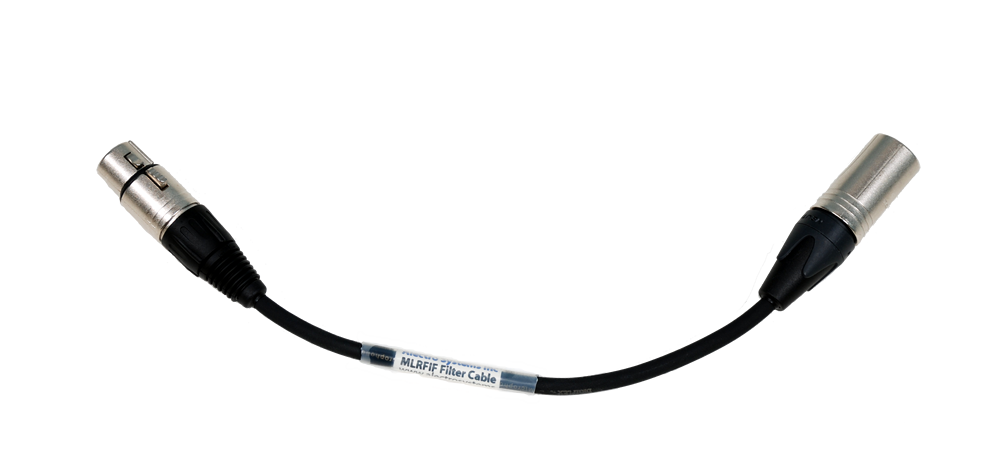MLRFIF Microphone Line radio Interference Filter Cable
Eliminates Radio Interference on Balanced Microphone Lines

 The MLRFIF Mic Line RFI Filter eliminates annoying radio interference on low impedance balanced microphone lines. It also works on Line level signals. The unit consists of a 12 inch cable with a standard (XLR type) male 3-pin mic connector on one end, and a female 3-pin mic connector on the other. All components are top professional quality. The RFI Filter is built into the male connector so that it is as close to the mixer input as possible.
The MLRFIF Mic Line RFI Filter eliminates annoying radio interference on low impedance balanced microphone lines. It also works on Line level signals. The unit consists of a 12 inch cable with a standard (XLR type) male 3-pin mic connector on one end, and a female 3-pin mic connector on the other. All components are top professional quality. The RFI Filter is built into the male connector so that it is as close to the mixer input as possible.
To install it, you simply unplug the existing microphone cable from your mixer, plug the RFI Filter into the mixer in its place, and plug your mic cable into the other end of the Filter cable.
The Mic Line Filter has no effect on the audio signal since it has a flat response from DC (below audio frequency) to 20KHz (above audio frequency). It almost totally annihilates Radio Frequencies from 500KHz up. This covers all radio bands from AM through Microwave. At the bottom end of the AM radio band (600KHz) the interference is reduced by more than 98.5% from its original level. As the frequency of the interference increases, the attenuation of the filter also increases, reducing the interference to even lower levels.
Because the filter passes DC, it will work fine with Phantom Power.
How does the MLRFIF fix your problem?
A microphone wire connected to your mixer acts as a radio antenna. The efficiency of the antenna is determined by the quality of shielding and the length and routing of the wire. If you have a radio station nearby, it will be picked up by this microphone wire. In many cases, there is no way to eliminate this, regardless of the quality of wire and routing.
The radio interference picked up by the wire is brought into your mixer as Radio Frequency. This radio signal is de-modulated by the mixer, resulting in audio from the radio station added to your sound. The MLRFIF filters out all radio frequencies. When it is installed on the input to the mixer, it does not allow the radio frequency to pass through, thus eliminating the problem.
To determine if it will work for you, turn off all the microphone volume controls on your mixer. If the radio interference disappears, and only comes back when you turn up a microphone volume control, the MLRFIF will most likely fix the problem. You will need one MLRFIF filter for each microphone line which is affected.
